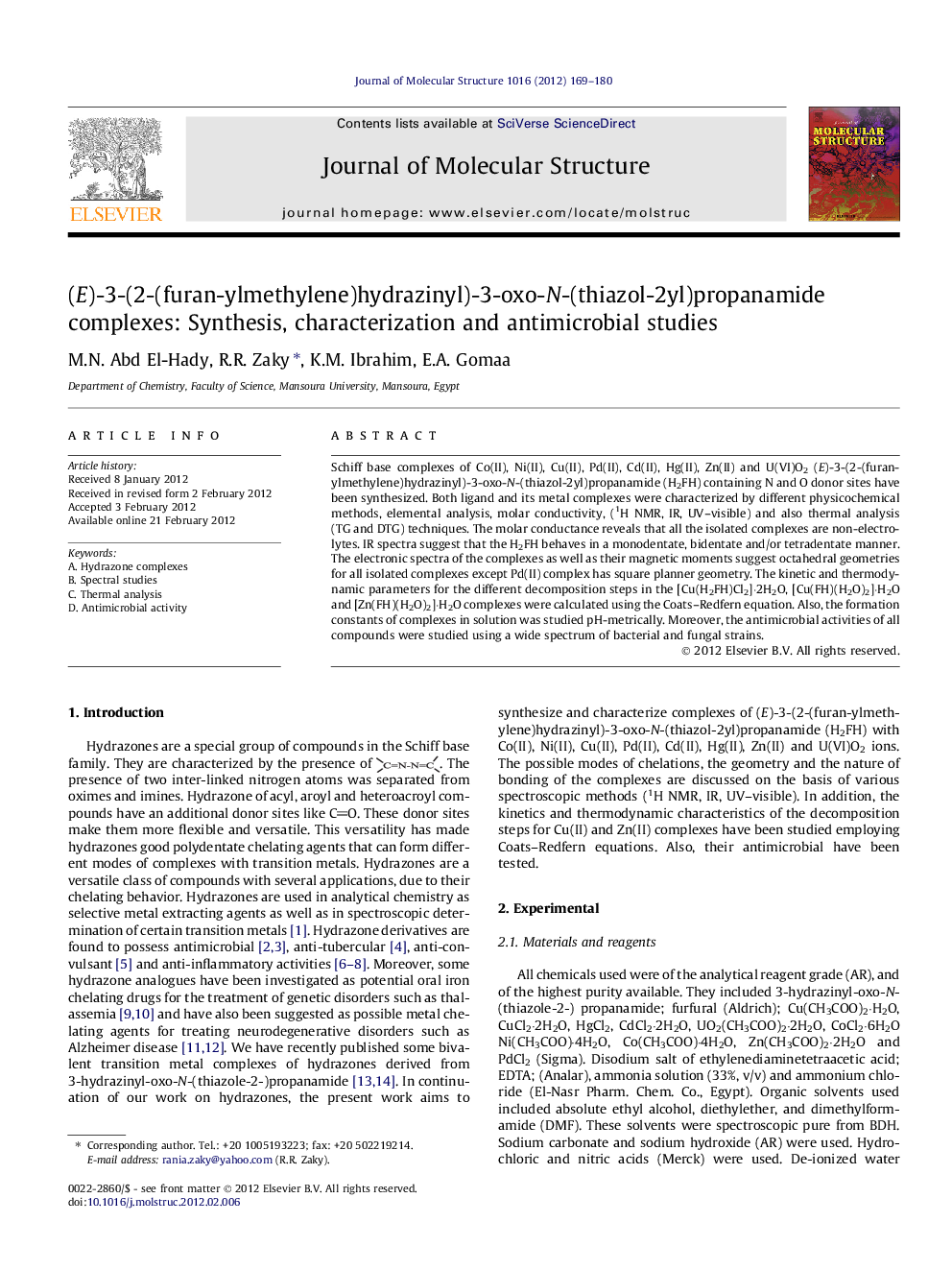| Article ID | Journal | Published Year | Pages | File Type |
|---|---|---|---|---|
| 1403557 | Journal of Molecular Structure | 2012 | 12 Pages |
Schiff base complexes of Co(II), Ni(II), Cu(II), Pd(II), Cd(II), Hg(II), Zn(II) and U(VI)O2 (E)-3-(2-(furan-ylmethylene)hydrazinyl)-3-oxo-N-(thiazol-2yl)propanamide (H2FH) containing N and O donor sites have been synthesized. Both ligand and its metal complexes were characterized by different physicochemical methods, elemental analysis, molar conductivity, (1H NMR, IR, UV–visible) and also thermal analysis (TG and DTG) techniques. The molar conductance reveals that all the isolated complexes are non-electrolytes. IR spectra suggest that the H2FH behaves in a monodentate, bidentate and/or tetradentate manner. The electronic spectra of the complexes as well as their magnetic moments suggest octahedral geometries for all isolated complexes except Pd(II) complex has square planner geometry. The kinetic and thermodynamic parameters for the different decomposition steps in the [Cu(H2FH)Cl2]·2H2O, [Cu(FH)(H2O)2]·H2O and [Zn(FH)(H2O)2]·H2O complexes were calculated using the Coats–Redfern equation. Also, the formation constants of complexes in solution was studied pH-metrically. Moreover, the antimicrobial activities of all compounds were studied using a wide spectrum of bacterial and fungal strains.
► (E)-3-(2-(furan ylmethylene)hydrazinyl)-3-oxo-N-(thiazol-2yl) propanamide complexes were prepared. ► The complex structure was elucidated using different characterization techniques. ► The kinetic and thermodynamic parameters for the different decomposition steps were calculated using the Coats–Redfern equation. ► Antimicrobial activities of all compounds were studied using a wide spectrum of bacterial and fungal strains.
